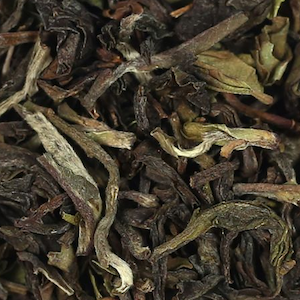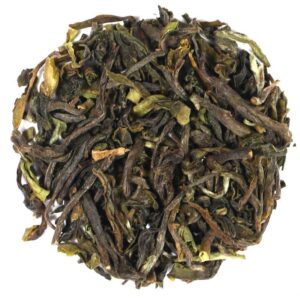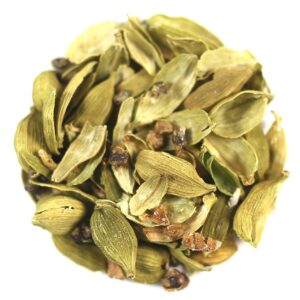Indian Teas
India’s storied landscapes and rich, fertile soils nurture some of the world’s most revered tea gardens. It is the world’s second-largest tea producer, after China. Tea from India is alluring not just for its history or vast plantations. It’s also prised for the diverse and unmatched quality of the teas.
From the strong and malty Assam teas in the Northeast to the delicate and floral Darjeeling teas from the Himalayan foothills. Each type has a unique story in every sip. We understand the art and heart that goes into producing every leaf.
Showing 1–12 of 134 results
-
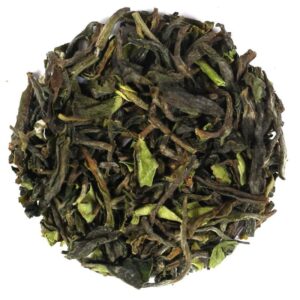
2023 Jungpana Darjeeling First Flush Tea
From £4.84— or subscribe and save 10%Select options This product has multiple variants. The options may be chosen on the product page -
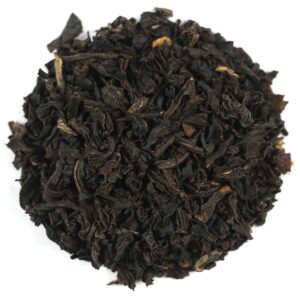
Assam Behora FBOP Tea
From £2.37— or subscribe and save 10%Select options This product has multiple variants. The options may be chosen on the product page -
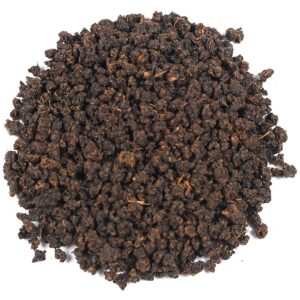
Assam Broken Orange Pekoe Tea
From £2.27— or subscribe and save 10%Select options This product has multiple variants. The options may be chosen on the product page -
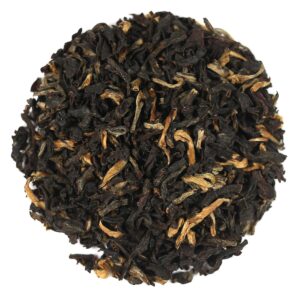
Assam Hattialli Tea GFBOP
From £2.88— or subscribe and save 10%Select options This product has multiple variants. The options may be chosen on the product page -
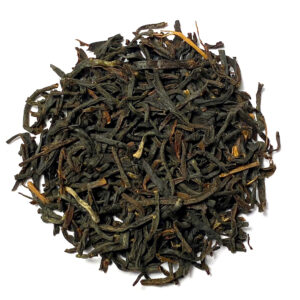
Bogapani Assam Tea TGFOP
From £2.45— or subscribe and save 10%Select options This product has multiple variants. The options may be chosen on the product page -
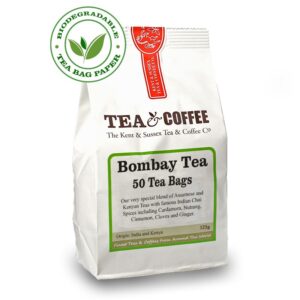
Chai Tea Bags
£3.27— or subscribe and save 10%Add to basket -
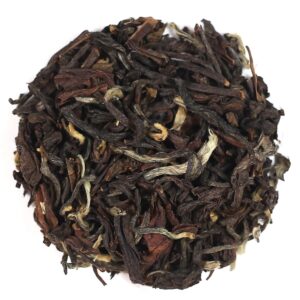
Darjeeling Balasun Second Flush Tea FTGFOP1
From £7.15— or subscribe and save 10%Select options This product has multiple variants. The options may be chosen on the product page -
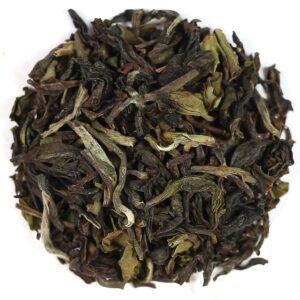
Darjeeling First Flush Ambootia Tea SFTGFOP1
From £6.29— or subscribe and save 10%Select options This product has multiple variants. The options may be chosen on the product page -
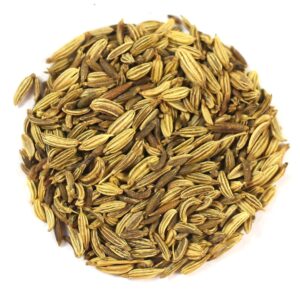
Fennel Seed Tea
From £1.55— or subscribe and save 10%Select options This product has multiple variants. The options may be chosen on the product page -
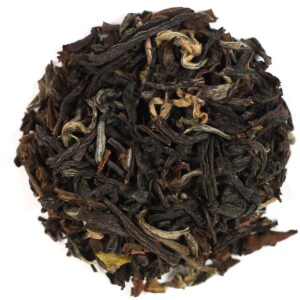
Organic Darjeeling Avongrove Tea FTGFOP1
From £3.74— or subscribe and save 10%Select options This product has multiple variants. The options may be chosen on the product page
History of Tea in India
Tea’s origins in India are steeped in myth and legend. Many stories attribute its discovery to historical figures and divine interventions. But, the recorded history of tea farming in India began in the early 19th century. Then, the British East India Company started making tea at a large scale. This was to break the Chinese tea monopoly.
The British experimented with tea plantations in Assam. They found the region was home to a native tea plant, Camellia sinensis var. assamica, which was different from the Chinese Tea plant variety. This marked the start of an expansive tea industry. It would forever change farming and culture.
They set up tea plantations in Assam through many experiments. They were rigorous and dedicated. The entrepreneurs were British and local. They also did so in other regions like Darjeeling and Nilgiri. Each region had its own flavor due to its unique climate and elevation.
These regions now mean high-quality tea production. They greatly help the global tea market. They set the standard for great tea growing and processing.
Tea Growing States in India
The landscape is diverse. It is as diverse as its tea varieties. Several states take prominence in tea cultivation and production. Each state offers unique flavors and qualities. These are shaped by their geography and climate. The most notable tea-producing regions in India are:
Assam: Located in the northeastern part of India. Assam is one of the largest tea-producing regions in the world. Assam tea is known for its bold, brisk, and malty flavors. This makes it a favourite for tea fans around the world.
Darjeeling: In the foothills of the Himalayas. Its teas are often called the “Champagne of Teas” for their great aroma and delicate flavors. The flavors range from floral to fruity.
Nilgiri: Located in the south of India. The Nilgiri Hills produce aromatic, flavorful tea. People often describe it as intensely fragrant. Nilgiri teas are known for their crisp and clean taste.
Kangra: Nestled in Himachal Pradesh. Its teas are lesser known, but highly valued for their unique qualities. They offer a sweet and floral flavor. This is distinct from their Assam and Darjeeling counterparts.
Munnar: The rolling hills of Munnar in Kerala are home to some of the highest tea plantations. Munnar teas are appreciated for their robust flavour and bright, golden-coloured brew.
These regions have unique terrain. They greatly add to India’s reputation as a top tea-producing country. Each crafting tea is celebrated and loved across the globe.
Popular Types of Tea from India
India shows its contribution to the global tea market. It does this by producing the most popular and distinct teas. India’s tea production happens annually in many regions. It shows the country’s dominance in the tea industry. It also highlights the diverse flavors and aromas loved by tea enthusiasts worldwide. Here are some popular types of Indian tea and an overview of their annual production:
Assam Tea: One of India’s most beloved teas. It is renowned for its robust flavor, briskness, and malty character. Assam is the world’s largest tea region. It produces over 650 million kg of tea a year. This is more than half of the country’s total tea output.
Darjeeling Tea: Known as the “Champagne of Teas.” Its great smell and complex flavor make it a prised feature. The flavor ranges from musky-sweet to floral and fruity. Despite its global acclaim. Darjeeling tea is only a small part of India’s production. Annual output is 8-10 million kg due to the limited area of the plantations.
Nilgiri Tea: Grown in the Blue Mountains of southern India. It is known for its aromatic, tasty, and brisk qualities. It produces about 100 million kg each year. It is a big part of both the domestic and export markets.
Kangra Tea: Known for its delicate and clean flavor. It has hints of sweet and floral notes. Though less famous than Assam or Darjeeling, it has a niche but dedicated following. The annual production in this region is relatively small, underlining its exclusivity.
Munnar Tea: The high ranges of Kerala’s Munnar produce strong tea. It has a unique and robust flavor. Munnar’s annual tea production is a big part of South India’s output. Estates in the Western Ghats sprawl across thousands of acres.
These varieties have distinct flavors, production methods, and places. They show India’s rich tea heritage and its key role in the global tea industry.
Each type of Indian tea tells a story of tradition. Countless individuals grow and process these tea leaves. They offer tea lovers a sip of India’s rich culture.
The Future of Indian Tea
The demand for tea is rising. India’s tea industry is changing to meet new consumer preferences. It is also staying true to its rich heritage. New technologies and sustainable practices are being implemented. Indian teas are now more accessible, diverse, and ethically made.
Today, it is also a leader in organic and speciality tea. It serves a growing global audience seeking unique, high-quality teas. The industry is growing at 6% per year. The future is bright for India’s tea industry. Demand will rise from India and abroad.
Also, the Tea Board of India runs the “Chai Pilgrimage.” It promotes tourism at tea plantations. India’s tea industry helps the economy and offers a cultural journey for travellers.
Indian tea has come a long way from being a household beverage. It is now an integral part of the global tea market. With its diverse flavours, distinctive varieties, and rich traditions continues to elevate the
Sustainability and Fair Trade Practices
The tea industry has grown. This growth has led to more concern for sustainability and fair trade. The Kent and Sussex Tea and Coffee Company is committed to supporting ethical production. They also support sustainable production. These methods ensure fair wages, safe working conditions, and environmental preservation.
We work closely with our suppliers to find teas from gardens. The gardens adhere to ethical and sustainable practices. This helps the well-being of local communities and a healthier planet. By choosing ethically produced teas, you enjoy the real flavors of India. You also support responsible, sustainable tea production.
In conclusion, the company continues to thrive. It offers unique and distinct teas for diverse palates worldwide. Indian teas have a rich cultural heritage. They are committed to sustainability and use innovative production methods. This position them to remain leaders in the global tea market for years to come.
Join us on a journey through the diverse tea regions. You will taste the rich flavors. These made Indian tea a favourite among tea fans around the world. So go ahead, take a sip of India with every cup.

 Loose Leaf Tea
Loose Leaf Tea Pyramids
Pyramids Tea Bags
Tea Bags Africa
Africa Assam
Assam Ceylon
Ceylon Chinese
Chinese Darjeeling
Darjeeling European
European Indian
Indian Japan
Japan Nepal
Nepal South East Asia
South East Asia Ayurveda Tea
Ayurveda Tea Black Tea
Black Tea Chai Tea
Chai Tea Flowering Tea
Flowering Tea Fruit Tisanes
Fruit Tisanes Green Tea
Green Tea Herbal Tea
Herbal Tea Matcha Tea
Matcha Tea Oolong Tea
Oolong Tea Organic Tea
Organic Tea Pu erh Tea
Pu erh Tea Rooibos Tea
Rooibos Tea White Tea
White Tea Asian Coffee
Asian Coffee Caribbean Coffee
Caribbean Coffee Central American Coffee
Central American Coffee South American Coffee
South American Coffee Coffee Blends
Coffee Blends Decaffeinated Coffee
Decaffeinated Coffee Espresso Coffee
Espresso Coffee Ethically Sourced Coffee
Ethically Sourced Coffee Flavoured Coffee
Flavoured Coffee Organic Coffee
Organic Coffee Single Origin Coffee
Single Origin Coffee Chocolate 1
Chocolate 1 Chocolate 2
Chocolate 2 Chocolate 3
Chocolate 3 Chocolate 4
Chocolate 4 Chocolate 5
Chocolate 5 Chocolate 6
Chocolate 6 Chocolate 7
Chocolate 7 Chocolate 8
Chocolate 8 Chocolate 9
Chocolate 9 Loose Tea Filters
Loose Tea Filters Tea Accessories
Tea Accessories Tea Bricks
Tea Bricks Tea Caddies
Tea Caddies Tea Caddy Spoons
Tea Caddy Spoons Tea Gift Ideas
Tea Gift Ideas Tea Infusers
Tea Infusers Tea Strainers
Tea Strainers